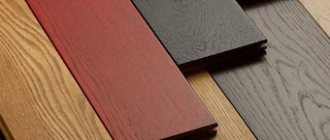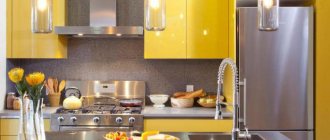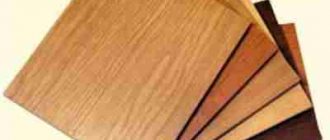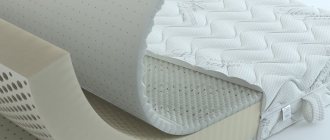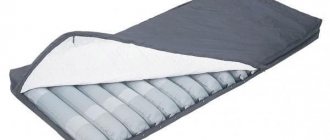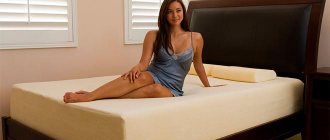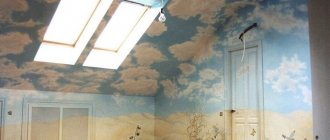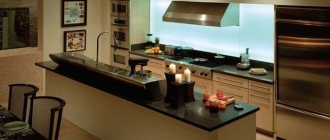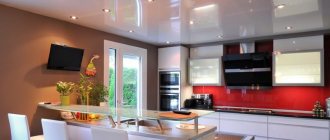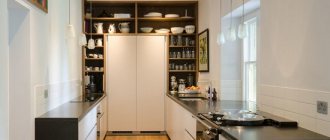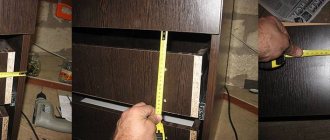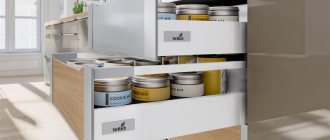The facade of a house is the same as a person’s face. Types of facades may differ from each other depending on the materials used.
Let's consider the most popular and reliable finishing options for houses. These today include:
- decorative plaster;
- decorative rock;
- planken;
- brick;
- panels.
Below are the types of facades finished with such materials.
Main varieties
Facades can be dry or wet. In the first case, the systems are installed without the use of construction and adhesive solutions. The elements are fixed with mechanical fasteners such as nails, dowels, screws, etc. For example, a siding facade and other materials of this type are called dry.
When considering the types of facades, it is also worth paying attention to those that are installed using wet technology; for this, building mixtures are used. This variety includes plaster facades and systems that are finished, for example, with clinker tiles, because they require the use of an adhesive mixture. Every single-family home owner compares these systems before starting work. Dry facades have a clear advantage, because they can be installed year-round, regardless of weather conditions. But wet systems ensure the integrity of external walls.
Solid wood facades. Advantages and disadvantages
Kitchens made of natural wood will help create a warm and harmonious atmosphere. Most often, such sets are chosen for spacious kitchens, as they look very bulky.
The Arizona kitchen is an example of high-quality furniture with a facade made of solid acacia. A distinctive feature of the mezzanine doors and cabinets is the milled doors, opened with varnish and treated with patination techniques. The set will fit perfectly into the classic atmosphere and give the kitchen a noble appearance.
Kitchen Arizona. Acacia tree.
The advantages of wooden facades include their environmental safety, strength and durability. Cabinet doors made in a classic style are not influenced by fashion, so this set will not have to be changed after a short time. The disadvantages of wooden facades are their high cost, standard shapes and sizes, as well as special maintenance requirements.
Description of ventilated and non-ventilated facades
An additional classification of facades is ventilated and non-ventilated systems. The first type involves organizing a gap between the wall and the finishing material. The wall of the house can additionally be insulated and covered with windproof film.
Air will circulate freely in the air gap, eliminating dampness and moisture that may arise due to condensation on the inside of the decorative material. In addition, moisture can come from inside in the form of steam. At the same time, the materials receive reliable protection, and the building’s ceiling lasts longer, while the insulation is protected from atmospheric phenomena such as rain, snow and wind.
When considering the types of facades, pay attention to non-ventilated systems, which are installed when there is no need for external thermal insulation. If the walls do not breathe, then you can refuse to install a ventilated facade. For example, clinker tiles can be fixed directly to the walls themselves.
Types of structures
First, let's look at what kind of building facades there are.
They are of the following types:
- "Dry" . Such façade systems are installed without the use of adhesives or other building solutions. All elements are fastened using mechanical fasteners - nails, dowels, self-tapping screws, etc. For example, siding facades and other materials of a similar type can be called dry.
- "Wet" . An integral attribute of wet facades are various types of building mixtures. So, “wet” are called plaster facades, finished with clinker tiles (adhesive is required to attach the tiles), etc.
Scheme of a “wet” plaster with insulation
If we compare the presented types, the advantage of a “dry” facade will be the possibility of year-round installation, regardless of weather conditions. As for the “wet” system, it makes the structure more holistic.
Ventilated and non-ventilated
Regarding the question of what types of house facades there are, an additional classification should be presented.
Facade structures are divided into:
- Ventilated . This technology provides for the organization of a ventilation gap between the finishing façade material and the ceiling wall (or insulation covered with a windproof film for thermal insulation). Freely circulating air in the air gap removes moisture and dampness that occurs due to condensation on the back wall of the finishing material and penetrates from the inside to the outside through the ceiling in the form of steam. At the same time, the material itself reliably protects building floors (including insulation) from direct exposure to atmospheric phenomena.
The photo shows the facade of the house, with a ventilated system installed
- Non-ventilated . If there is no need for external insulation of the structure, and also if its walls do not “breathe,” the installation of a ventilated facade can be neglected. For example, clinker tiles can be glued to a brick wall or a concrete wall.
Advice! When finishing the facade of a wooden house, be sure to choose a ventilated system, since wood “breathes” and itself releases a large amount of moisture. If this moisture is not removed, the wooden structure of the house will begin to rot.
The instructions for arranging a ventilated facade provide for the use of not only “dry” installation methods.
So, a wooden house can be tiled in the following way:
- A sheathing is mounted on the ceiling, ensuring the presence of a ventilation gap (insulation and windproof film are laid between the lathing strips, if necessary).
- Next, the house is sheathed with OSB along the sheathing.
- Finishing tiles are glued to OSB.
Non-ventilated brick finishing
For reference
Types of facades, which are called ventilated, involve the use of not only dry, but also wet installation methods. If you want to tile a wooden house, then you can follow a certain algorithm. A sheathing is installed on the ceiling, which will provide a ventilation gap. If necessary, insulation and windproof film can be laid in this space. At the next stage, OSB is installed along the sheathing, then you can begin laying tiles.
MDF facades covered with plastic
Thanks to the emergence of new technologies, MDF is covered not only with PVC film, but also with plastic. When making such facades, plastic is glued to the base, and the edges are processed using the postforming method. This technology helps to obtain the ends of the facade with curved plastic. The remaining ends are treated with acrylic, PVC film, ABS, or aluminum edging is used.
The original Rain kitchen facades are covered with plastic with a wavy structure. Thanks to the contrasting colors, this set looks very impressive and will help create a stylish atmosphere in your kitchen.
Kitchen sale Rain
Plastic surfaces have longer service life, as well as high resistance to detergents, water, temperature changes and mechanical damage. The disadvantage of plastic facades is that fingerprints remain on them, and doors made by cold pressing often have dents or other defects.
Types of materials for facade finishing
If you want to choose the best façade for your home, then you need to consider not only the design features of the future system, but also the materials. To begin with, you should pay attention to traditional and popular materials. This includes clinker bricks and artificial stone. The latter option is used quite actively for cladding external walls, because it has low weight and is moisture- and wear-resistant.
The cost of such material is relatively low, among other things, it is durable. In appearance, the facade will be almost no different from that consisting of natural stone. Clinker brick has also proven itself well in finishing facades; its low water permeability and smooth texture make walls less easily soiled. The facade is durable and performs well in all climatic conditions.
Use of façade cassettes and porcelain stoneware
Residential buildings are increasingly being clad with facade cassettes, which are practical and durable, they do not require painstaking maintenance, and installation is also not very difficult. The material for the cassettes is galvanized steel with a polymer coating. For this reason, the colors of the cassettes can be very different, so that every home owner can choose a color that suits his taste.
The porcelain stoneware façade is durable and easy to care for. There are a variety of colors and textures, thanks to which you can bring a variety of ideas to life. If you make such a facade, you need to take into account that it consists of 4 structural parts. There is a load-bearing contrast here, which is fixed on the outside of the wall so that an air gap is created between the facade and the porcelain stoneware. A sheathing with an insulating layer and a waterproofing membrane should be hung on the frame. Finally, it’s time to attach porcelain tiles.
Use of facade plaster
By looking at the types of house facades, you can get acquainted in more detail with those that are equipped with plaster. Once applied, it can be painted any color; the material is inexpensive and can be combined with different types of finishes. The most popular in this case are acrylic and silicone plasters. The first option is the cheapest, it has excellent moisture-insulating qualities and is used for thermal insulation of facades with polystyrene foam. There is also a disadvantage here, which is expressed in low elasticity, which can cause microcracks and damage when temperatures change.
If you still can’t decide which types of house facades suit you best, then you should pay attention to silicone plaster, which is more expensive, but has no other disadvantages. The material is waterproof, withstands the negative effects of external factors, lasts a long time and does not lose its original appearance.
Finishing facades with facing bricks
Using decorative brick for cladding, you can quickly, at low cost, provide excellent sound and thermal insulation, and turn a country house into a small castle or a magnificent residence. Modern brands of facing bricks offer a wide selection of colors from brown to sand. The finishing can imitate masonry, and combinations of different shades and textures of facing bricks give the ordinary facade uniqueness and originality.
Alternative finishes
If none of the above options suits you, then you can choose panels or facade tiles. Tiles differ from finishing with natural or artificial stone only in thickness and laying technology. Fixation to the base is done using the adhesive method. If you use panels, you can use them to create a ventilated façade that thermally insulates the walls.
Considering the types of building facades, you may prefer finishing with a block house or clapboard. The naturalness of these materials is ensured by their noble and lively appearance. External wall defects can be hidden, because brick and wooden facades often have them. If you properly care for this finish, it will last more than 25 years.
Cladding presupposes the need to arrange a ventilated system. If you want to reliably protect your facade from bad weather, then you can use siding, which looks attractive and lasts quite a long time. Thermal panels are also suitable, acting as a new finishing material that combines aesthetic appeal and reliability. The material also has an insulating inner layer.
What types of facade finishing are there?
The modern market offers high-quality building materials in large quantities, and there are also many decoration technologies. The most popular types of finishes are:
Cladding the facade of the house with porcelain tiles.
- Decorative plaster intended for finishing.
- Brick intended for cladding.
- Porcelain tiles and clinker slabs.
- Various types of siding (vinyl, wood).
- Stone (artificial and natural can be used).
- Sandwich panels.
- Facade cassettes.
Each of these materials has its own advantages and disadvantages; in order to make the right choice, you need to consider everything in detail.
Installation of a ventilated facade made of porcelain stoneware: preparation
The types of facade finishing were presented above. If you decide to choose a hanging system, then you can prefer porcelain stoneware as a decorative material for it. At the first stage of installation work, marking is carried out. The master should determine the bottom line, which is drawn horizontally.
Next, the two extreme lines are determined, which will be drawn vertically. You will need to drill holes in the walls using a hammer drill to mount the brackets. A paronite gasket is installed in the holes, and then you can proceed to installing the brackets, for which a screwdriver and anchor dowels are used.
Using siding
If you need to use the most inexpensive material for finishing facades, then it is recommended to opt for siding. It should be noted that siding is the best way to protect a house from rain and wind, and it also perfectly decorates the house.
There are many types of siding; vinyl is the most popular. If we talk about its appearance, then in many ways it is similar to the board for cladding the facade, but the siding is more durable and wear-resistant. This material is very convenient to use, dirt does not stick to it, and it is very easy to wash. It should also be noted that siding does not rot, does not fade, and is not subject to corrosion.
Installation of siding is not very complicated, which allows you to do it yourself. Everything is really quite simple: the wooden sheathing is fixed to the walls of the facade, after which the panels are mounted on the house.
Work methodology
At the next stage, you can proceed to the installation of the wind-hydroprotective and insulating layer. It is necessary to strengthen the heat-insulating plate through the slots for the brackets. Next, the canvas and wind protection are hung, and everything is temporarily secured. Through the film and insulation boards, you need to drill holes in the wall where the disc-shaped dowels are inserted. Insulation boards need to be installed from the bottom row. The slabs should be placed horizontally in a checkerboard pattern. There should be no through gaps between them.
At the next stage, vertical guide profiles are fixed to the adjusting brackets. A profile is installed in the grooves of the load-bearing and support brackets. Different types of facade materials are available for sale today, but porcelain stoneware is most often used for ventilated systems. To fasten it, you should use clamps, which are located in the holes made by an electric drill. The clamps are installed in accordance with the design and fixed with rivets to the frame profile through drilled holes.
Porcelain tiles can be installed with a visible seam. This method is the simplest. However, you can disguise the seams by painting them the same color as the tile itself. If you install decorative material without a visible seam, then the porcelain stoneware should be fixed to the guides using a horizontal cut.
Veneered fronts for the kitchen. Advantages and disadvantages
Veneer is sheets of wood up to 0.3 cm thick, which are obtained by sawing, planing or peeling natural wood. Veneered facades acquire a noble appearance with a natural wooden texture. The cost of such facades is much lower than those made from solid wood.
Depending on the type of varnish, veneer surfaces can have a matte or glossy texture. If you compare veneer with PVC film, it is more durable and resistant to various damages. In addition, it accurately imitates natural wood. Any scratches can be easily removed from the surface of such facades. Unlike veneer, plastic and PVC cannot be restored.
In the catalog of the Kitchen Territory salon you can find sets with different fronts, including veneered ones. Veneer covers not only MDF, but also wooden surfaces. The Alba kitchen is made of solid wood, while the doors of all cabinets are covered with Ash veneer and three layers of varnish.
Kitchen Alba Wenge. Ash veneer.
The facade is the face of your kitchen, so when choosing a set, pay attention to the type and quality of the materials used. The cheapest option is furniture with MDF facades, and the most expensive option is furniture made of natural wood. Depending on the budget and interior style, everyone chooses the most suitable solutions for themselves. In modern interiors, MDF facades are most often used, as they amaze with the variety of textures and colors. Solid wood furniture is found mainly in classic interiors.
The “Kitchen Territory” salon offers a wide range of sets based on standard designs and to order, with facades made of laminated chipboard, MDF and solid wood. Create a kitchen for every taste with us!
Finishing the facade with plaster: preparing tools and materials
Different types of facade work require certain external conditions. For example, plastering can be done in sunny, dry weather. However, it is also important to prepare tools and materials, including:
- primer;
- a set of beacons;
- reinforcing mesh;
- set of spatulas.
A primer will be needed for protective treatment of the facade, and beacons will be needed to control the laid layers. In order to prevent the appearance of cracks, you need to stock up on reinforcing mesh. But in addition to a set of spatulas, you will need a special rule, knives and graters.
Finishing facades with decorative plaster
Classic plastering of the external walls of a building is not an outdated method due to the appearance of new products and innovative developments on the building materials market. Modern plasters are produced with mineral, silicate, acrylic and silicone compositions. Plastering mineral mixtures have a lime base, and the base components of other types include liquid glass, silicone and acrylic resins.
The best resistance to environmental pollution of silicate plasters predetermines their use in areas with unfavorable ecology, and the most practical, durable and expensive are silicone mixtures. All plasters for exterior use are available in a wide range of colors and retain their decent appearance for decades, despite the aggressive effects of weather.
Applying plaster
Not all types of finishing the facade of a house will be suitable for the average home craftsman. Therefore, before starting work, you need to assess your capabilities. Before applying plaster, the facade should be cleaned of old materials. The walls are freed from dirt and dust. If there are defects and cracks, they should be eliminated. At the next stage, the wall is primed, and then the mesh is reinforced on it. After this, you need to prepare a solution, the volume of which should correspond to what you can produce in a certain time.
The solution is applied by spraying or injecting liquid under pressure. The first layer will be cosmetic; it will eliminate unevenness and cracks. After it has dried, you can begin applying the second layer, after first cleaning the beacons from the mixture that has fallen on them. This layer should be equipped with a thicker mass.
The beacons should not be blocked, as they will begin to slide under their own weight. These types of facade cladding are usually trusted by specialists, because they are familiar with all the nuances of the technology. At the final stage, you need to rub the surface using the rule, but this must be done after the moisture has evaporated from the plaster. The dried mixture can be applied with paint, which will make the facade more attractive.
Variety of frame structures and their properties
The facades have a simple and reliable design and at the same time look modern.
This material is made from durable raw materials, and the connections are made using advanced technology. The main advantage of the front elements is their affordable price and long service life.
There are several types of models made using frame technology: film, wooden, aluminum and painted models.
The design consists of a frame and a panel or a glass insert. The frame is made of solid wood and other materials. Glass elements are inserted into aluminum structures.
Do-it-yourself frame facades must meet the following requirements:
- Resistance to external influences and reliability of the material.
- Resistance to humidity.
- Resistance to the influence of temperature changes.
Of the furniture designs for the kitchen, those that meet all the parameters are used. Each option has its own characteristics and specific application.
When choosing a model, you should familiarize yourself with the properties of the materials used.
Features of facades made of wood, white MDF for Provence style
The wooden type of frame is made from wood of different types of wood. The panel is made of wood, MDF and other materials.
The wood texture is suitable for kitchens of classic design. Modern technologies make it possible to use not only the natural look of wood, but also veneered elements.
Wood-colored floor cabinets look perfect with glass wall cabinets
Wooden structures are of two types:
- Solid structures are made from natural wood and are characterized by high cost. Special coatings are used to protect against cracking and damage.
- Paneled models consist of several layers. Veneered MDF or chipboard is used. This composition reduces the cost of the material and increases its service life.
Wood products require high-quality care. Do not clean structures with abrasive substances or hard sponges.
Wooden facades have the following advantages:
- safety and high level of environmental friendliness;
- presentable appearance;
- resistance to temperature changes;
- recovery after damage;
- high performance characteristics.
The disadvantages include increased cost and the possibility of swelling or drying out.
Wood is susceptible to sunlight, so it changes color over time.
Natural wood facades are treated with special coatings:
- The varnish protects the material from dirt and moisture. Creates a matte or glossy effect.
- Polishing with wax or special oil protects the surface from damage.
The production of frame facades from MDF is characterized by an affordable price. The material is made from crushed wood, which is pressed under high pressure. Natural resin is used as a binding material.
MDF boards are finished in different ways: painted, treated with veneer or covered with PVC film.
The product in a classic style is decorated with carvings, cornices or figured elements.
Kitchen with photo pattern "coffee beans" ideal for light floors
What are the advantages of a painted facade: what is it made of?
The painted facade is made from MDF panels. These designs fit into any interior style, as they are offered in a variety of colors.
The dyeing process is complex. The surface of the product should look smooth and shine in the glare.
MDF is considered a durable material. It does not have the irregularities that are present on natural wood.
For finishing, veneer, painting or PVC film is used.
Painted products have the following advantages:
- Possibility to choose from a variety of color palettes.
- Various coating options: matte surfaces, glossy or metallic.
- Ease of maintenance and use.
- Resistant to high temperatures and steam.
Disadvantages include instability to mechanical damage.
Manufacturing using modern paint application technologies allows you to create durable products. First, the part is coated with primer, and then several layers of paint are applied. Finally, the surface is varnished.
Such products will fit into an interior in a minimalist or high-tech style. Combined with metal and glass elements.
Application of film-coated facades
Cheap options include assembling a frame facade from an MDF structure treated with film.
PVC film is attached to the material using special glue and a vacuum press.
A pink kitchen looks perfect in a light-colored interior
Film structures have different textures, thicknesses and colors.
This material has the following advantages:
- Wide selection of colors and imitations of natural materials.
- Resistance to harmful influences. Tolerance to household chemicals.
- Cheapness.
Over time, the film will peel off. The back side of such facades remains white.
Plastic look
The base of this type of facade can be chipboard covered with plastic. It can also be MDF, but its price will be higher, since it is of better quality. It is strong and resistant to moisture, has a smooth surface. It is worth knowing in advance that such a coating cannot have threads.
pros
The advantages of plastic include:
- ease of care;
- low cost;
- durability, resistance to high temperatures, sharp objects;
- large selection of shades.
Minuses
Plastic also has disadvantages:
- presence of a joint between the front and side sides;
- the edges will be different from the front;
- the surface can only be smooth, without threads.
